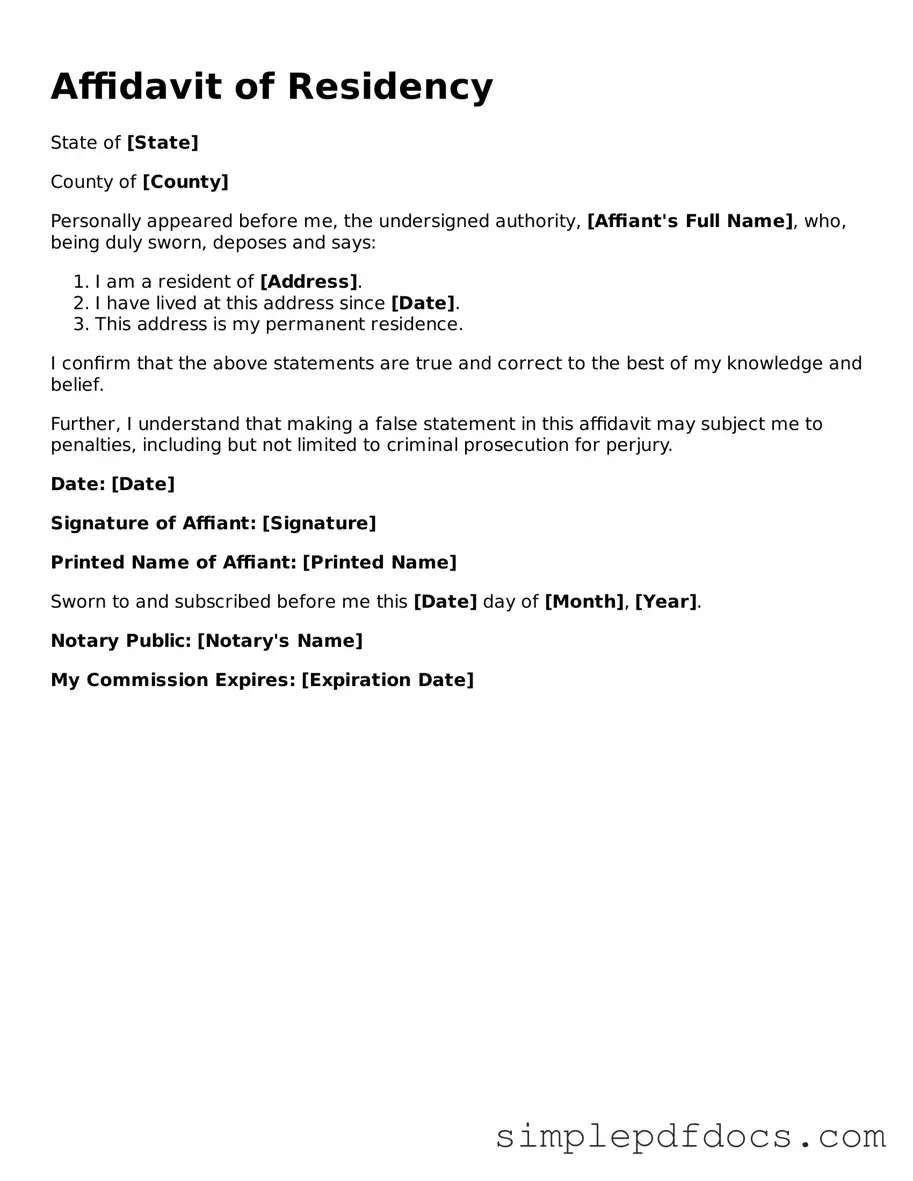The Affidavit of Residency form serves as a vital tool for individuals seeking to verify their residence in a specific location, often for legal or administrative purposes. This document is typically required in various situations, such as enrolling children in school, applying for certain government benefits, or establishing residency for voting. By completing this form, individuals affirm their current living situation, which may involve providing details about their address, the duration of their residency, and possibly the names of individuals residing with them. It is important to note that this form often requires notarization, ensuring that the information provided is accurate and truthful. Understanding the significance of the Affidavit of Residency can help individuals navigate processes that hinge on proof of residence, making it an essential component of many legal and bureaucratic procedures.
